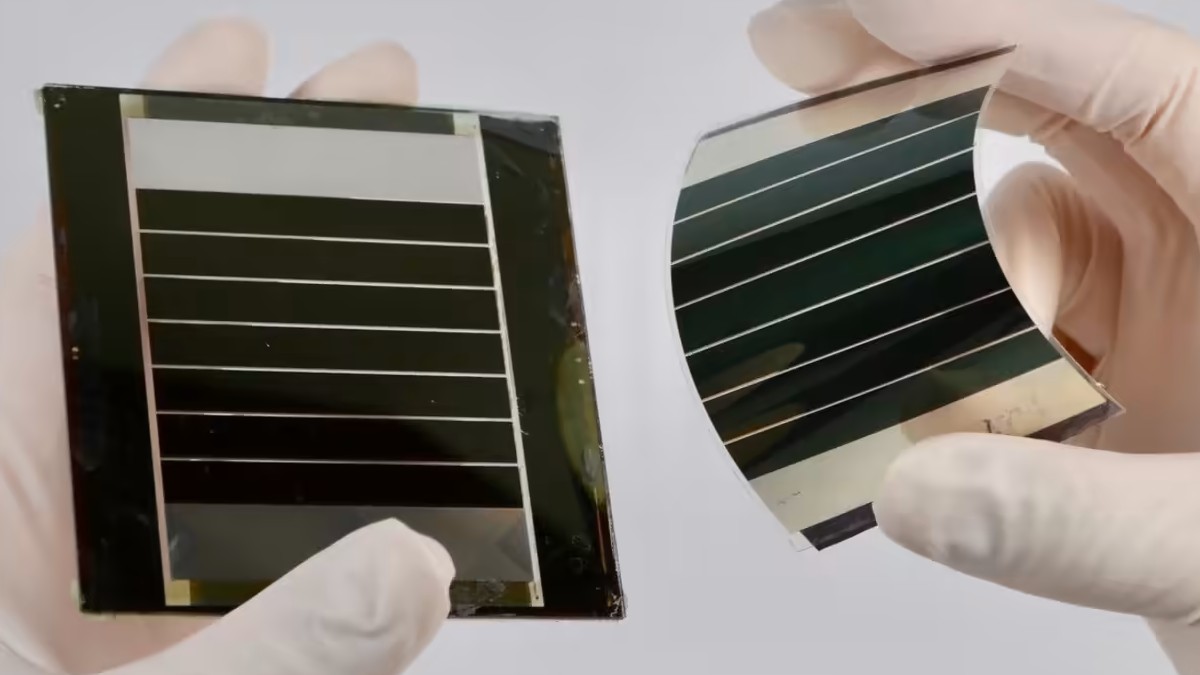
An MIT-led team revealed a “guidebook” for how to tune surface properties of perovskites, a silicon alternative – here’s why that’s huge for solar.
Perovskite solar cells, inspired by the mineral with a similar crystal structure, have been a serious topic of research within the renewable energy sector for some years now. Their potential to redefine the solar energy landscape is vast, offering a tantalizing combination of high efficiency, low manufacturing costs, and the unique ability to be applied to a variety of substrates, from rigid glass to flexible materials.
Their versatility opens up new avenues for solar installations, from urban buildings to portable, off-grid applications. However, perovskites have faced significant challenges, particularly concerning their durability and the efficiency retention when scaled to larger sizes — issues that have hindered their leap from laboratory to commercial viability.
Enter the new breakthrough paper from a team of researchers led by MIT, in collaboration with scientists from around the globe. Their innovative work, published today in the journal Nature Energy, addresses the two main hurdles that have been plaguing perovskite solar cells: their longevity and the challenge of maintaining high efficiency across larger module areas.
Lead author Dane deQuilettes, a recent MIT postdoc who is now cofounder and chief science officer of the MIT spinout Optigon, said:
This paper is essentially revealing a guidebook for how to tune surfaces, where a lot of these defects are, to make sure that energy is not lost at surfaces.
It’s a really big discovery for the field. This is the first paper that demonstrates how to systematically control and engineer surface fields in perovskites.
Traditionally, perovskite cells have struggled to match the durability of their silicon counterparts, which can reliably function for over two decades. Perovskites, on the other hand, have shown a tendency to degrade after just a few months to a few years of operation. Furthermore, replicating the high efficiencies achieved in small-scale laboratory samples over larger, commercially viable panels has proven to be a significant technical challenge.
The MIT-led research focuses on the intricate engineering of the nanoscale structure of perovskite solar cells to optimize their efficiency and extend their operational lifespan. A key aspect of the researchers’ approach involves a technique called “passivation,” which is aimed at stabilizing the material’s surface and interfaces. Passivation reduces the degradation of the cells, ensuring that they maintain their efficiency for a longer period. By analyzing and altering the interfaces where the perovskite material meets other components within the cell, the team has managed to unlock new strategies for enhancing stability and performance.
This work is impactful because it not only demonstrates how to improve the durability and efficiency of perovskite solar cells, but it also sheds light on the underlying mechanisms that lead to their degradation. The researchers’ insights offer a clearer roadmap for the development of perovskite cells that can compete with, and potentially surpass, the performance of traditional silicon-based solar cells in terms of efficiency, cost, and flexibility of application.
The MIT-led global team has basically provided directions for future engineering efforts aimed at commercializing perovskite solar cells. MIT professor Vladimir Bulovic said, “I think we are on the doorstep of the first practical demonstrations of perovskites in the commercial applications. And those first applications will be a far cry from what we’ll be able to do a few years from now.”
Bulovic also added that perovskites should be seen as an augmentation to silicon PV – “yet another way to bring about more rapid deployment of solar electricity.”
Read more: The race is on to power up with perovskite solar cells in space
To limit power outages and make your home more resilient, consider going solar with a battery storage system. In order to find a trusted, reliable solar installer near you that offers competitive pricing, check out EnergySage, a free service that makes it easy for you to go solar. They have hundreds of pre-vetted solar installers competing for your business, ensuring you get high quality solutions and save 20-30% compared to going it alone. Plus, it’s free to use and you won’t get sales calls until you select an installer and you share your phone number with them.
Your personalized solar quotes are easy to compare online and you’ll get access to unbiased Energy Advisers to help you every step of the way. Get started here. – ad*
FTC: We use income earning auto affiliate links. More.





Comments